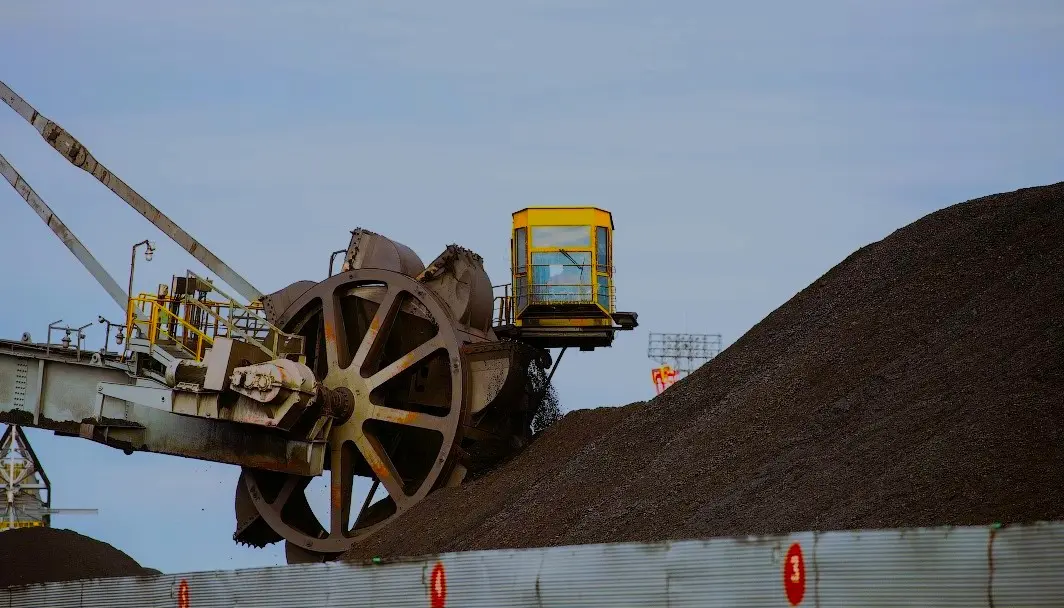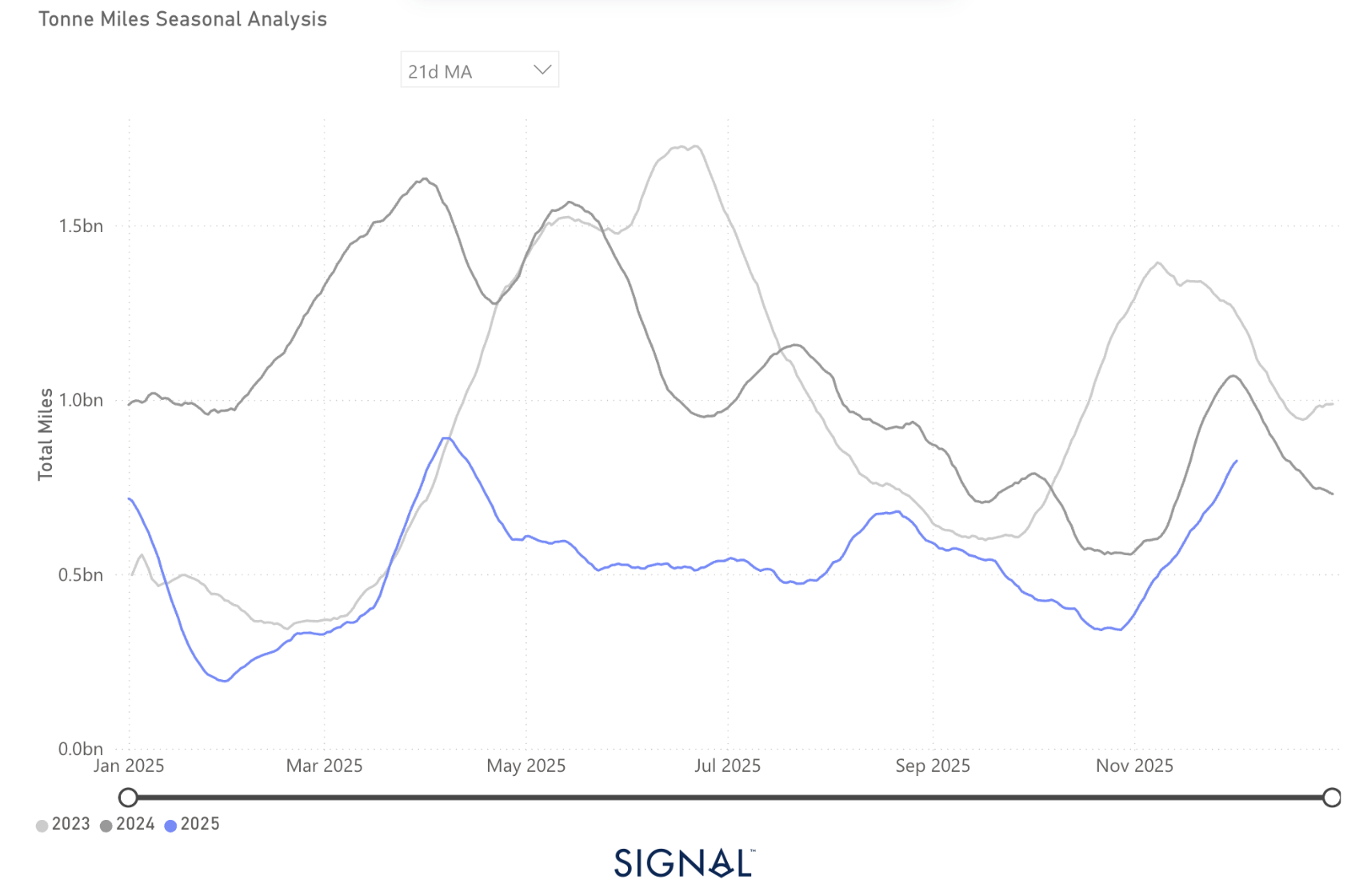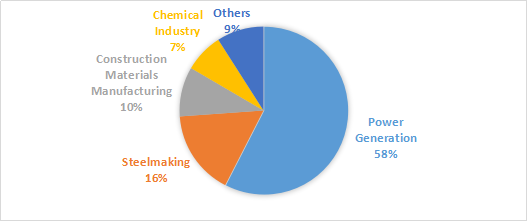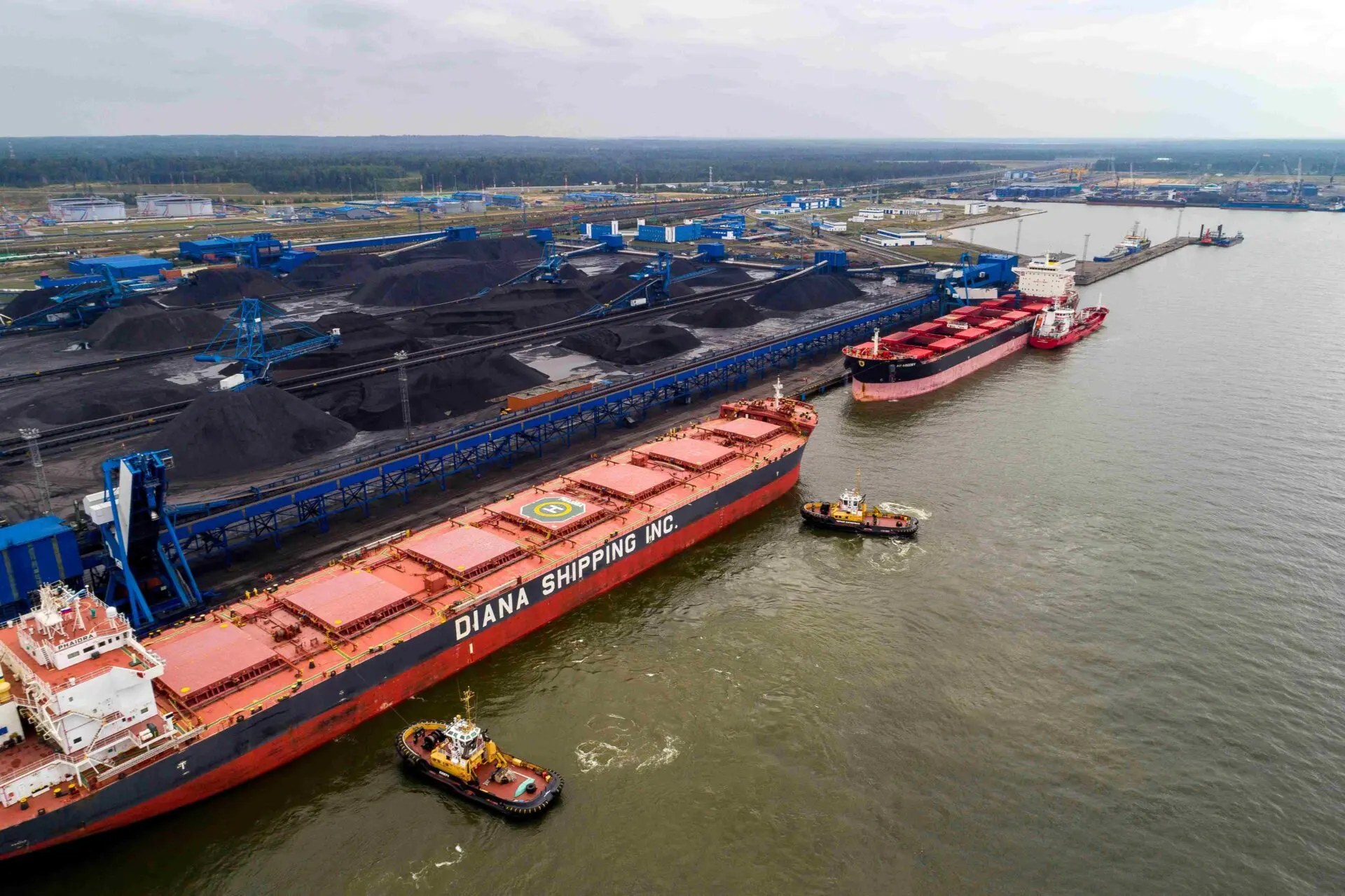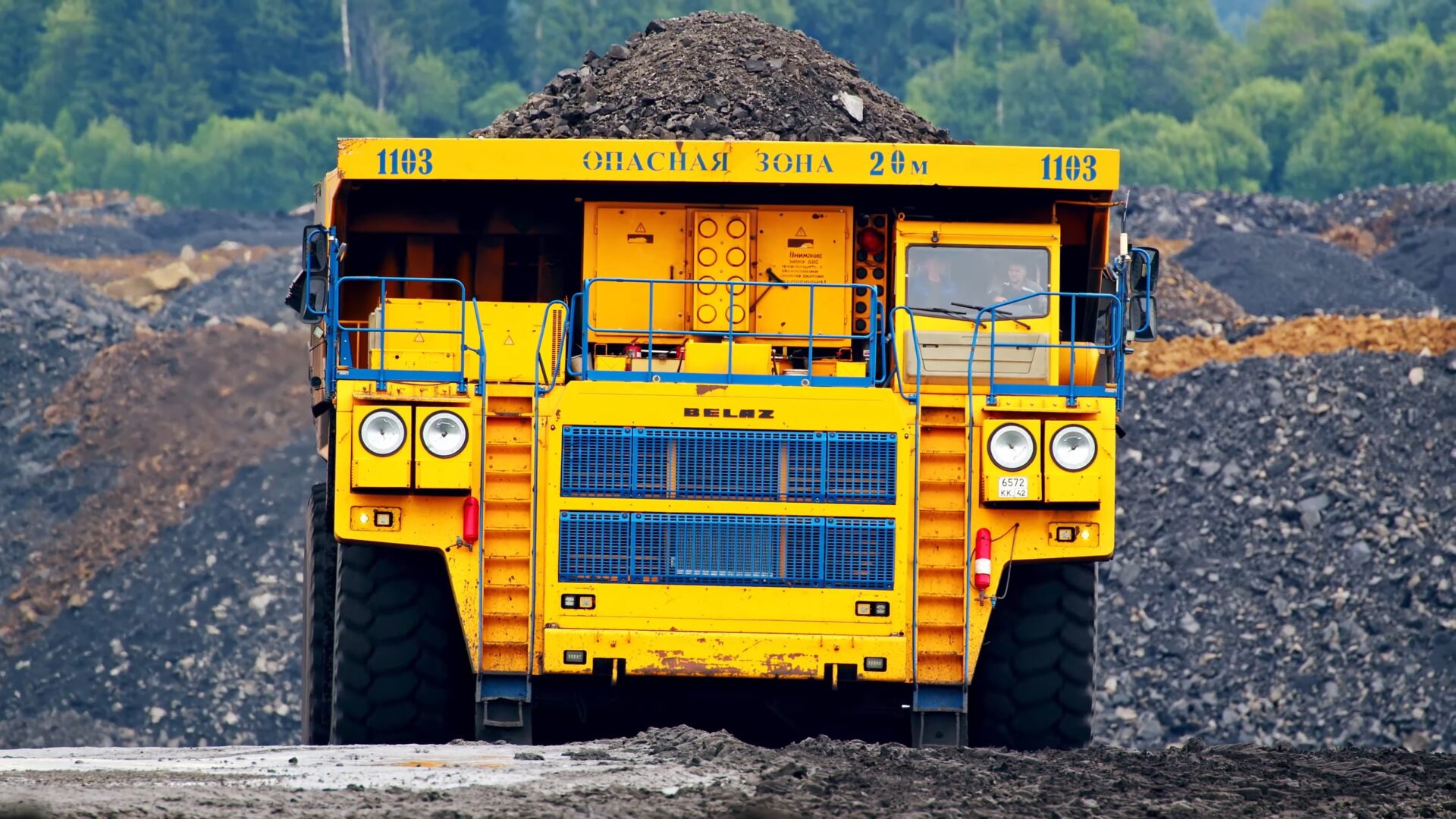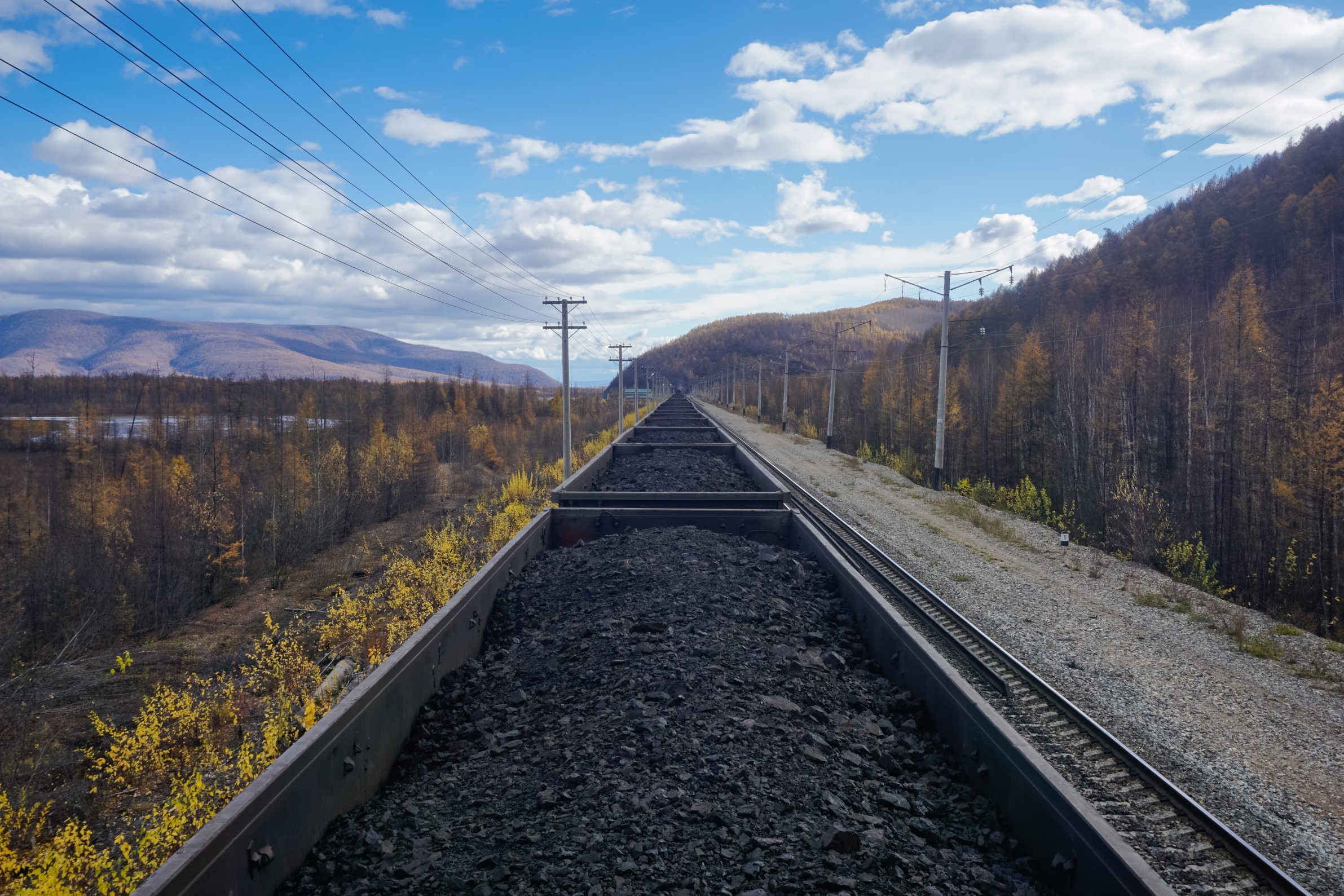
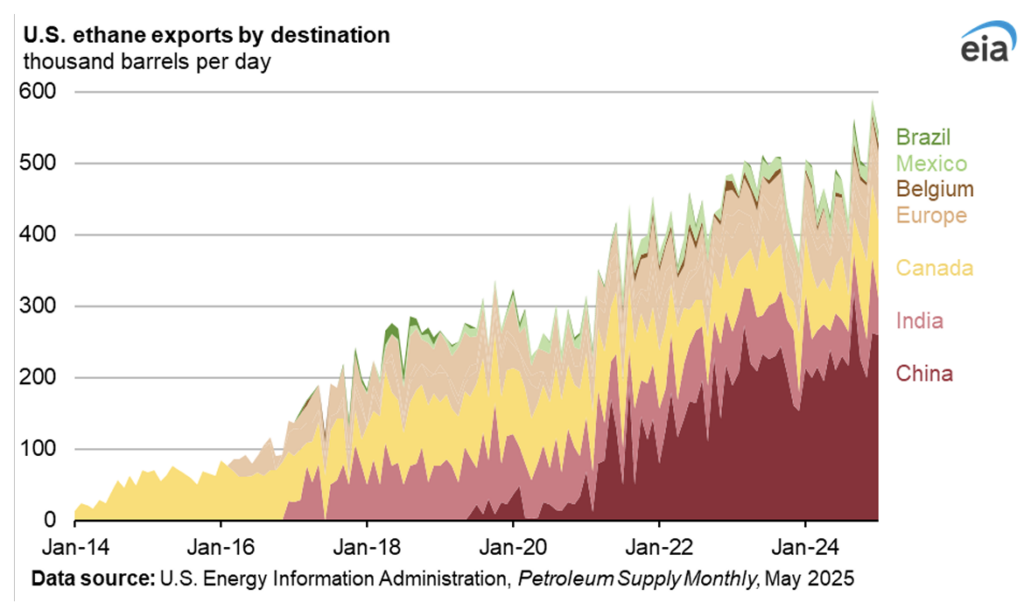
China has been the world’s dominant coal user and is consuming over half of the world’s demand, consuming more coal than every other country combined. The second largest coal consumer is India, which consumes less than a third of the amount of coal that China consumes.
China uses coal to fuel its enormous fleet of coal generators, which is larger than the entire U.S. generating fleet of all fuel types, but also to convert coal into liquid fuels using Fischer-Tropsch — a process discovered in 1925, and used by the Nazis during World War II and by South Africa during the oil embargo of the 1980s.
China is making liquid fuels from coal because it lacks natural gas and oil resources, but has a large coal base.
China consumes about 380 million metric tons of coal as a feedstock for chemical and liquid fuel production, representing about 8% of the country’s total coal consumption of 4,939 million metric tons.
The International Energy Agency expects the sector to grow between 5% and 10% in the coming years, offsetting a decline in coal consumption to produce cement and steel in China.

Source: Bloomberg
China has been converting some of its coal into chemical products and liquid fuels in the “traditional” coal chemical industry, starting with metallurgical coal, converted into coke, and transformed into ammonia-based fertilizers and acetylene-based chemicals.
Over the last two decades, however, China has employed new variations of the original Fischer-Tropsch process, along with other innovative methods, including methanol synthesis, to produce petrochemical goods such as olefins, which are used to make plastics.
The new variations are typically referred to as the “modern” coal chemical industry.
In the new industry, coal is mined underground almost directly beneath the chemical facilities and carried by conveyor to the furnaces where it is gasified and transformed. Commercial-scale projects became popular in the 2010s, particularly in China’s heartland, where the bulk of the country’s coal fields are located.
Erdos, a coal liquefaction plant located in Inner Mongolia, was the first plant of the type and has been operating since November 2010. It is the largest coal-to-liquids complex outside of South Africa, with a capacity of 20,000 barrels per day. The plant, which cost $2 billion, produced 866,000 tonnes of oil products in 2013. It uses 7-12 metric tons of fresh water per metric ton of product and generates 4.8 metric tons of wastewater and nine metric tons of carbon dioxide per metric ton of product.
The process enhances energy security for China due to its reliance on imported oil and gas. For example, last year, China accounted for nearly 50% of U.S. ethane exports (230,000 barrels per day out of a total of 492,000 barrels per day), primarily used to produce plastics. The Trump administration sees these exports as an unacceptable risk due to their potential use in military applications.
As such, the United States is making American exporters of ethane or butane apply for export licenses if they plan to ship ethane to China.
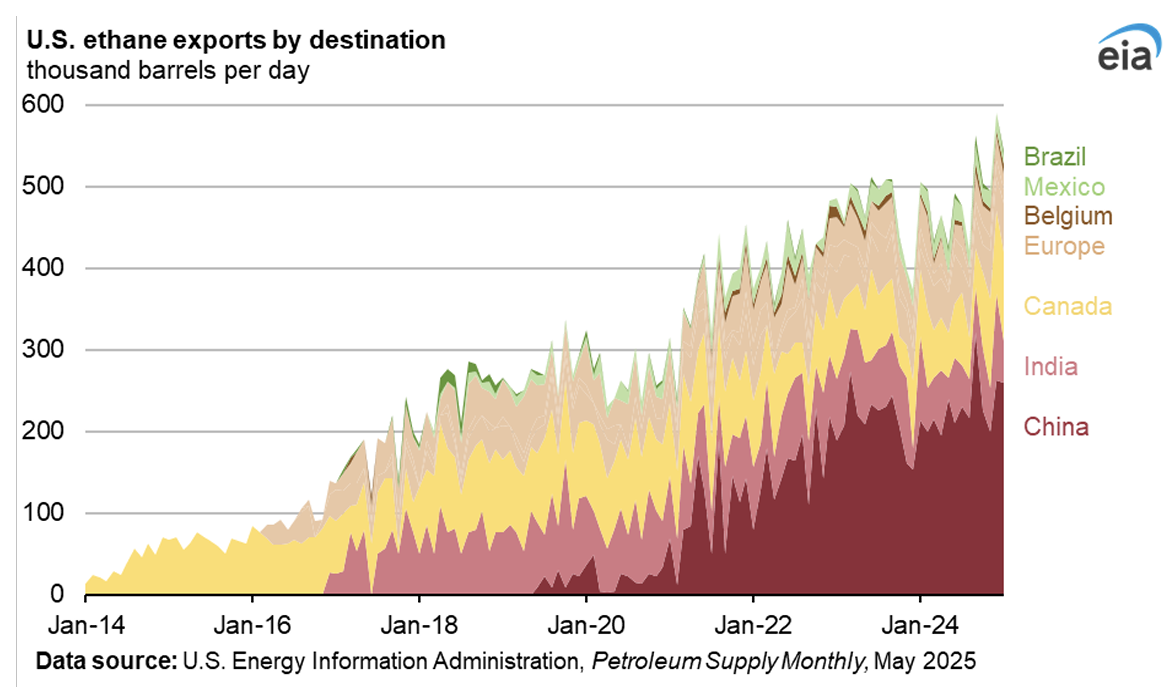
Source: EIA
Ethane is a natural gas liquid that is primarily extracted from raw natural gas during processing. It is primarily used as a feedstock for ethylene production, a crucial building block in the petrochemical industry. Ethylene is used to produce a wide range of products, including plastics, resins, and synthetic rubber. The United States and Norway are the only countries with the infrastructure to export waterborne ethane; however, ethane has not been separated from the natural gas stream in Norway over the past few years due to high natural gas prices in Europe.
With China’s vast coal use, it is the world’s largest emitter of carbon dioxide, and converting coal to liquid fuels will only make the country emit more carbon, particularly as that industry grows.
In 2023, China emitted 11,218 million metric tons of carbon dioxide — 32% of the total carbon dioxide global emissions in that year — and 6.1% higher than its carbon dioxide emissions in 2022.
China’s pledge to the United Nations is to have its carbon dioxide emissions peak by 2030 and then begin to reduce them, with net-zero emissions reached by 2060.
Its quantitative targets for 2030 include cutting carbon dioxide emissions per unit of GDP by more than 65% from 2005 levels and increasing the share of non-fossil energy to around 25%.
But its actions regarding its coal industry and uses show an entirely different direction, despite adding solar and wind power and housing the electric vehicle (EV) firm with the most significant global sales, BYD, which has surpassed Tesla in EV sales.
China turned to manufacturing solar panels, silicon, and electric vehicles to increase exports by marketing them to Western countries that had stringent goals for reducing carbon dioxide.
China is the world’s largest consumer of coal for generation and industrial uses, but its coal is also being converted to liquid fuels to supplement China’s oil and petroleum imports. China is the world’s largest importer of oil, importing 11.1 million barrels per day in 2024.
China imported almost half of the total U.S. exports of ethane in 2024, prompting the Trump administration to issue new licensing rules requiring companies to seek approval before exporting ethane or butane to China.
China, as the world’s largest emitter of carbon dioxide, does not seem to be making inroads in reducing those emissions. Instead, it is finding new uses for its coal.
Source: IER (Institute for Energy Research)


